Weather warnings and what they mean
These are issued when MetService alerts us to severe weather. MetService defines weather watches and warnings as:
- Weather Watch (Yellow) – issued when severe weather is possible but not yet certain. Watches are typically announced one to three days in advance to encourage people to be prepared and monitor forecasts.
- Weather Warning (Orange) – issued when severe weather is expected and meets MetService’s criteria. Warnings may be triggered by heavy rain, strong winds or snowfall exceeding specific thresholds.
- Weather Warning (Red Warning) – the highest level of alert, issued for extreme weather that is likely to cause significant disruption or damage.
Visit the Met Service NZ website to learn more Met Service NZ Weather Warnings explained
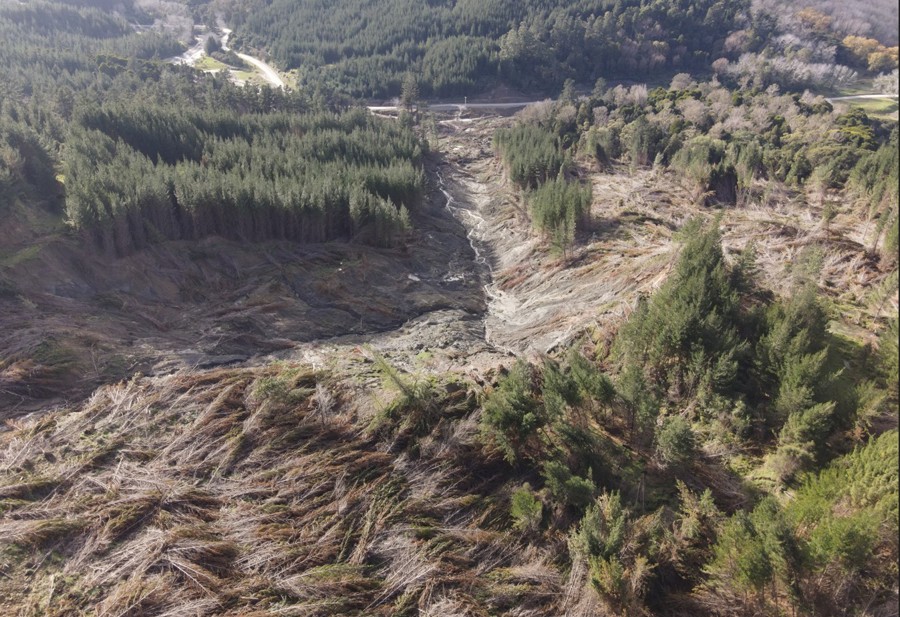
Mangahauini Gorge/SH35 landslide Photo Dr Murry Cave
Alerts and activations
TEMO maintains a duty officer system that monitors information feeds from a number of organisations including MetService, Earth Sciences New Zealand and the National Emergency Management Agency. When emergency warnings or watches are issued, these are shared with the public to ensure people are made aware of the situation.
Alerts and updates are posted on the TEMO Facebook page, website and directly with the community civil defence groups.
Emergency Text (E-text) Alerts
E-text is a service offered for the public to subscribe to for flood alerts and emergency warning. Alerts will be issued by TEMO or GDC Flood Warning Officers using the E-Text service. Members of the public can subscribe to receive E-text alerts hereSign up to E-Text alerts
Emergency Mobile Alert (EMA)
Emergency Mobile Alerts keep people safe and are broadcast to all capable phones from targeted cell towers.
Emergency Mobile Alerts are messages about emergencies. They are sent by authorised emergency agencies to mobile phones. Emergency Mobile Alerts keep people safe. They are broadcast to all capable phones from targeted cell towers to areas affected by serious hazards. You may not receive an alert if you are out of mobile coverage, mobile phone towers are damaged, or there is a power outage.
What is an Emergency Mobile Alert (EMA)? Check out the link to the Get Ready website Emergency Mobile Alert
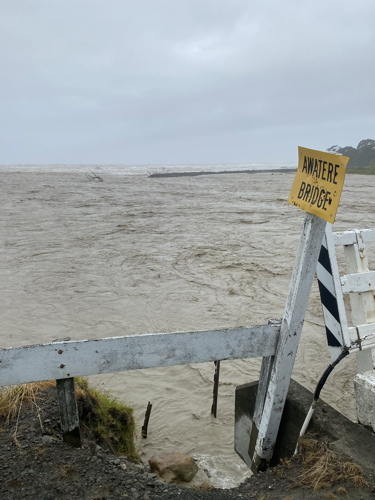
Declared State of Emergency
A state of local emergency is declared under section 68 or section 69 of the Civil Defence Emergency Management Act 2002.
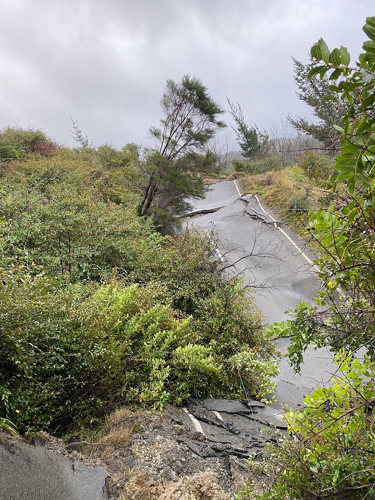
This is a situation that:
- is the result of any happening, whether natural or otherwise, including an explosion, earthquake, eruption, tsunami, land movement, flood, storm, tornado, cyclone, serious fire, leakage or spillage of any dangerous gas or substance, technological failure, infestation, plague, epidemic, failure of or disruption to an emergency service or a lifeline utility, or actual or imminent attack or warlike act; and
- causes or may cause loss of life or injury or illness or distress or in any way endangers the safety of the public or property in New Zealand or any part of New Zealand; and
- cannot be dealt with by emergency services or otherwise requires a significant and coordinated response under the Act.
State of National Emergency
Declared under Section 66 of the Civil Defence Emergency Management Act 2002.
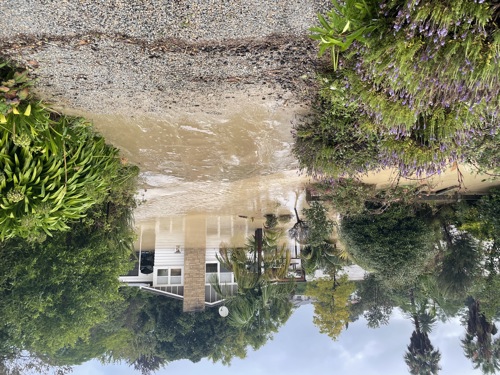
A flooded property in Fitzherbert Street during Cyclone Gabrielle 2023. Photo by Dr Murry Cave
How prepared are you and your whanau?
Always be prepared. Emergencies can happen anytime.
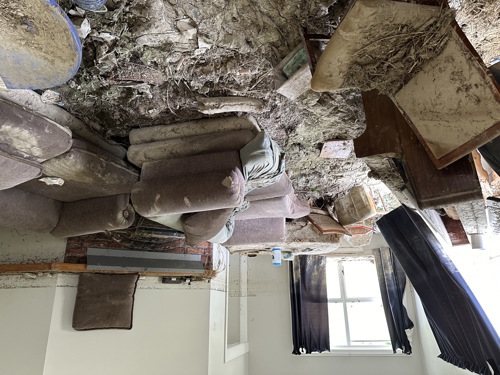
Be ready for any disaster
Emergencies can happen anytime – are you and your whānau prepared?
You should be able to cope on your own for at least five days. Here's a basic guide to what you'll need:
- An emergency plan – where to meet whānau and how to contact one another if separated.
- Prepare a grab bag of essential items.
- Enough food in your home to last up to 5 days.
- Know where to get water or have emergency drinking water as part of your household supplies.
- Alternative lighting – a torch with spare batteries or a wind up one, gas lantern or light-sticks.
- Battery operated or wind-up radio and spare batteries – don't forget your car radio as a last resort.
- First aid kit – make sure it includes any essential medications.
- Blankets, survival blankets or warm waterproof clothing.
- Alternative cooking methods like a BBQ or gas cooker.
- Store important family documents where you can get them easily, scan your key documents onto a USB memory stick.
What’s in a Grab Bag?
Have a grab bag for each of your whānau and have them ready to go
Each bag should have:
-
- warm clothes
- a bottle of water
- snacks
- copies of important documents and photo ID.
Key things to bring:
-
- medications you may need
- a first aid kit
- a torch
- a radio and batteries.
At Home
If you are trapped in your home due to an emergency there are a few things you should have in place. Make sure they're easy to find in a hurry or in the dark.
- Water for five days or more — as a guide you need at least nine litres of water for every person, for drinking, washing and cooking
- Long-lasting food that doesn’t need cooking (unless you have a gas cooker or BBQ)
- Food and drink for babies and pets
- Toilet paper, large plastic buckets for an emergency toilet, soap, toothbrush and sanitary items
- A first aid kit and essential medicines
- Torch and additional batteries
- Map of the area marked with places to meet and contact details.
- Dust masks and work gloves.
What’s your whānau plan?
Emergencies can happen anytime, anywhere and often without warning.
It’s important you and your whānau have a household emergency plan and practice it.
Where would you meet if there was no way of contacting each other?
If you care for young or elderly people or those with a disability or mobility problem or whānau who are ill or injured, what might be some special needs to consider?
Have you thought about your animals?
Some welfare centres allow for pets – if you have a cage for them, bring that too. Pack food and water for your pets as well. Have you planned and provided for other livestock?
What is your children’s school or day care evacuation plan?
Ask to see your school’s evacuation plan and know where they will take the children to.
Be across the emergency plan at work and other places your family spend time
Know what to do in case whānau are separated in an emergency. Be familiar with the evacuation routes and plan several routes just in case.
Tairawhiti Tsunami and Earthquake Booklet
Marcus showing what is in his grab bag
In an emergency, you can be stuck at work, without transport home. Make a personal workplace emergency plan so you know who to contact at work and have a plan to get home safely.
Emergencies can happen anytime, including during business hours. You can’t predict when they will happen, but you can take actions to make your business more prepared.
Identify the risks to your business and staff
Find out what the risks are and how they can impact on your business. Risks include natural hazards, health emergencies and utility failures. If you have staff, talk to them about the risks they think are most relevant to your business.
Make an emergency plan for your business
Businesses have an obligation to be prepared for an emergency. In most cases we can’t predict when an emergency will happen. But we can make plans to make sure our staff are safe, our financial and personal losses are reduced and we are able to get back to business as soon as possible.
Your plan should include the following.
* Emergency procedures for fire, earthquake, tsunami and other hazards.
* Assembly points, wardens and first aid training.
* How to contact staff, suppliers, clients and insurance providers.
* Alternative arrangements if you are unable to access your premises, files, etc.
Talk to your disabled staff. Find out what support they might need if there's an emergency. Also think about how you might need to help any visitors who have a disability.
Look after your staff
As an employer, you have a duty of care to your staff, including caring for them during and after emergencies. Start by involving your staff in identifying risks and making an emergency plan. Talk to them about what they, and their whānau, would need to get through an emergency.
Make sure your staff have personal workplace emergency plans so they know who to contact at work in an emergency and have a plan to get home safely. Provide supplies for your staff
In an emergency, your staff may be stuck at work or unable to take transport home for a day or more. Make sure you have enough supplies for everyone onsite for five days. This should include for visitors too.
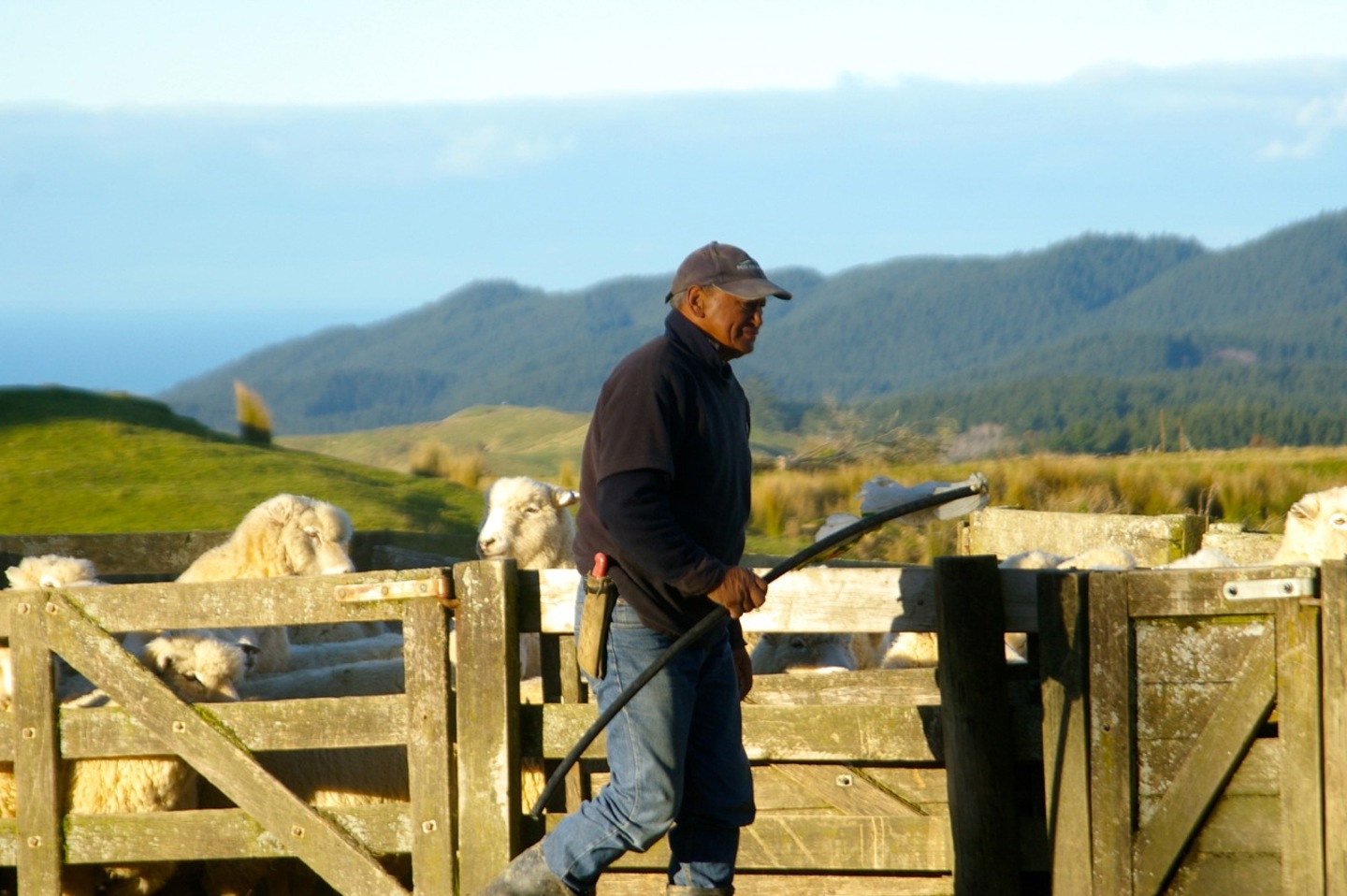
Rural communities, businesses and individuals need to adapt and build resilience to emergencies. Your animals are your responsibility. You need to include them in your emergency planning and preparation. Failing to plan for them puts lives at risk.
Preparing animals for emergencies
If an emergency happened today, do you have a plan I place to save yourself, your family, and your animals? Learn how to prepare to ensure the welfare of your animals during a disaster, such as an earthquake or flood.
Include animals in your emergency plans
Your animals are your responsibility. You need to include them in your emergency planning and preparation. Prepare an emergency plan that covers the major disasters that could affect animals in your family, farm, or workplace.
Discuss your plan, record it, and practice it with your family and co-workers. Keep your plan somewhere it can be easily seen. In your household, this could be on the fridge or by the front door. In a farm or animal facility, this could be kept in a dairy shed, stable, or shearing shed.
The Ministry for Primary Industries has an extensive library of resources you can use, from checklists to planning guides.
Make sure your animals can be identified
During an emergency, you could become separated from your pets and farm animals. Make sure your animals can be easily identified so you can be reunited.
Pet identification tips
* Add an ID tag to your pet’s collar. Put as much information on the tag that will fit – your pet's name, your name, phone number, and your address.
* Make sure your pets are microchipped and registered.
* Dogs should be wearing their current registration tag.
* On relevant microchip databases, keep the information about you and the animal up to date. Include next of kin or someone outside your household.
NZ Companion Animal Register
Livestock and horse identification tips
* For livestock, ensure your National Animal Identification and Tracing (NAIT) programme details are up-to-date.
* For large animals, like horses, add a tag to their halter, lead, or cover.
* Make sure horses are microchipped and registered.
Extra animal identification tips
* Store a current photograph of your pets and horses in a waterproof container. Include notes on any distinguishing features, name, sex, age, colour, and breed. Also include a photograph of you and your animals together to help prove ownership if you get separated.
* Save information online like microchip details, photographs, medical, veterinary, and contacts. For example, you could store it on Dropbox, a mobile phone, or an email account.
Plan for every type of emergency
* Fire: Plan how you will get your animals away from the fire zone and where you will go.
* Earthquake: Arrange who will check on your animals after an earthquake.
* Extreme weather: Know what to do if there's a storm coming or plan for dry conditions or droughts.
* Volcanic eruption: Consider how far away you need to get and where you will go.
* Floods and tsunamis: Decide how you and your animals will get to higher ground.
Prepare emergency kits for you and your animals
Check the kits regularly and keep them within easy reach. You might use the kits if help is not readily available, or before you can get to a veterinary clinic.
Have copies and backups of necessary documents and records.
You need 3 kits
1. Home emergency kit with enough supplies for 5 days.
2. Getaway emergency kit with supplies for moving yourself and your animals.
3. Animal first aid kit – put first aid supplies for your animals with your own kit.
First Aid Kit for Animals Checklist
Groups who can help
Federated Farmers may be able to provide advice if you need assistance with evacuating your livestock and finding a safe shelter place to contain them.
The Rural Support Trust are also a great source of information.
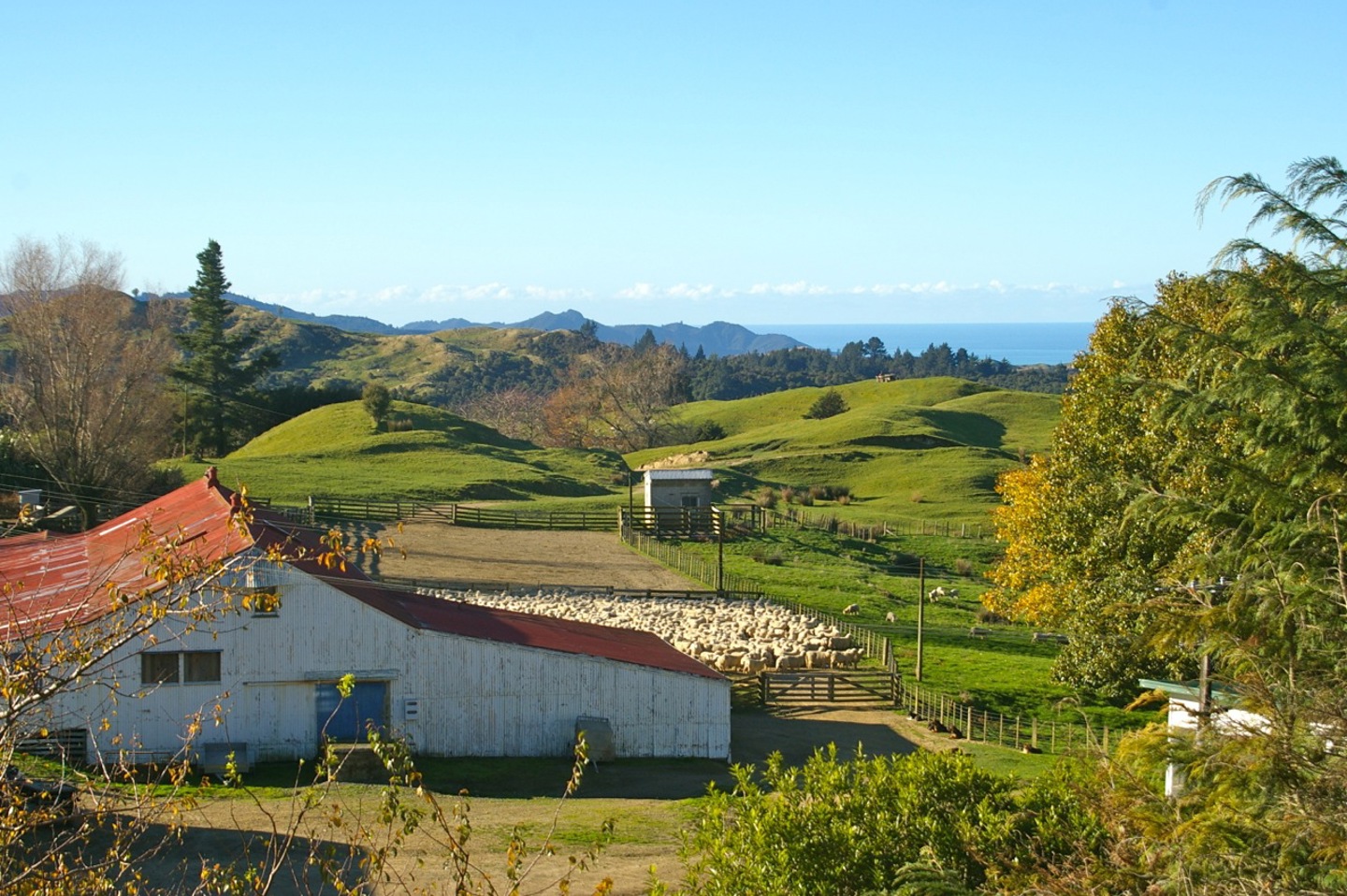
Puketiti Station Te Puia Springs: Photo B Green
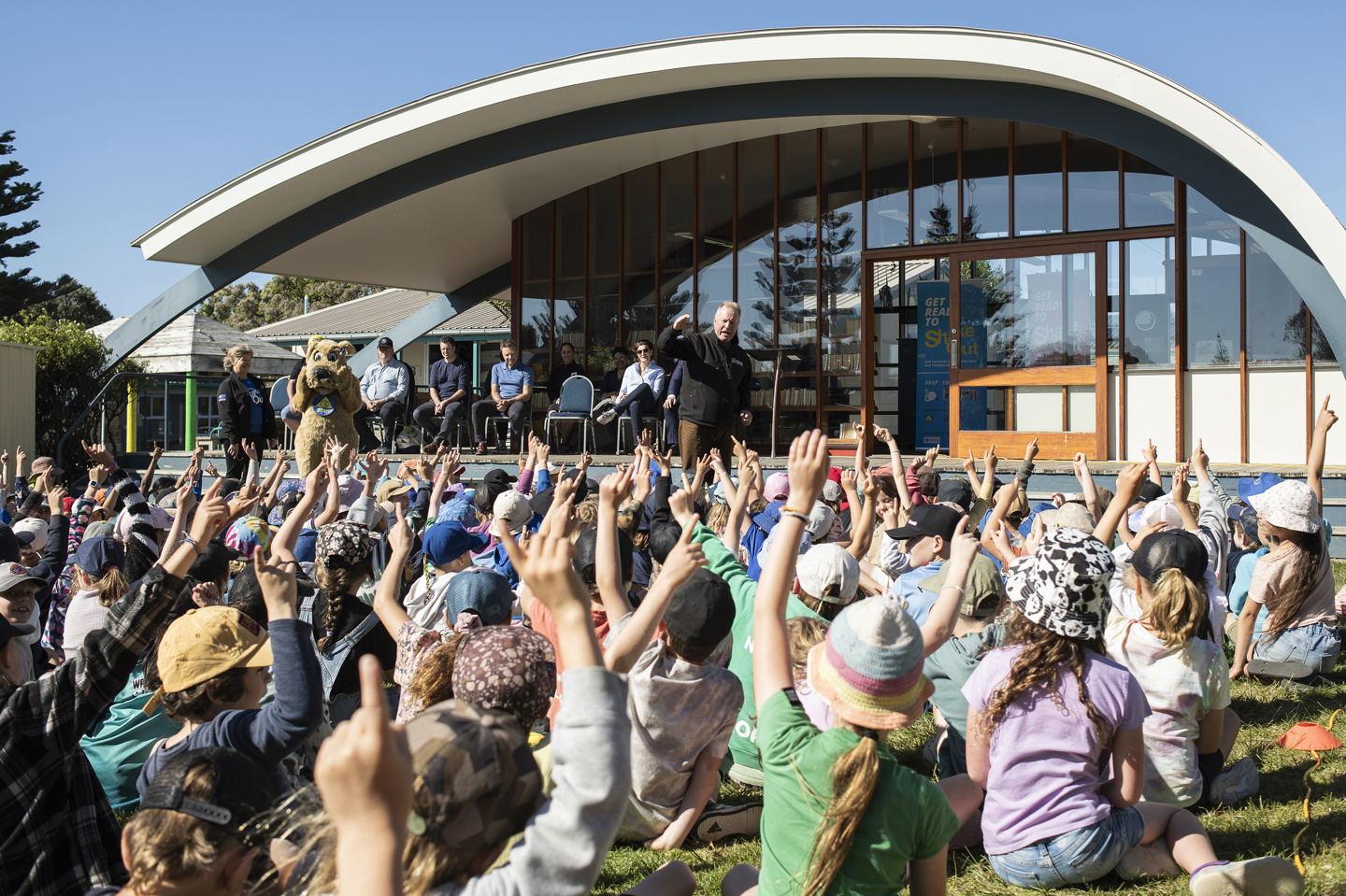
Wainui School - ShakeOut Drill 2024 photo NEMA
Schools play a large role in keeping the community safe. Find out about school responsibilities and how to teach students the knowledge and skills they need to be more prepared for an emergency.
Your school or early childhood centre may face an emergency. It’s important to be prepared for emergency events and know how to respond if they happen.
Early learning services and schools should have an emergency management plan for all hazards they may face.
The Ministry of Education has advice and guidelines to help you prepare your school for emergencies.
The Ministry of Education has advice for schools and early childhood education centres on preparing for and responding to emergencies.
Know your school's responsibilities
Your school or early childhood centre may face an emergency. It is important to be prepared for emergency events and know how to respond if they happen.
Early learning services and schools should have an emergency management plan for all hazards they may face. The Ministry of Education has advice and guidelines to help you prepare your school for emergencies (see links above).
Teach emergency preparedness
Find information and resources for teaching students about emergency preparedness and natural hazards.
Resources for early childhood centres
Talk to children about earthquakes
We encourage teachers to talk to children about earthquakes to help reduce fear and anxiety. Encourage children to ask questions. Give them an opportunity to express their feelings by talking or drawing. Remind them that earthquakes can be frightening but that it will get better and there will be people around to help.
An earthquake is when the ground shakes because rocks deep under the ground are moving. When a big earthquake happens there may be a loud rumbling noise. Things can start falling down around you. It might also be hard to stand up. You have to act quickly and protect yourself from things that might fall on you.
Turtle Safe | Kia Haumaru Honu Mai
Use our turtle safe video in your early childhood centres to help teach children the correct action to take an in earthquake. This video is available in English and Te reo Māori. There is a downloadable lyric worksheet that can be used alongside the video.
Turtle Safe - an educational video that teaches young children what to do in an earthquake
Remember how a turtle gets into its shell to keep safe? Here’s what you can do.
* If you are inside, quickly get under a table, and hold on to the table legs (if you can) so the table doesn't move away from you. Stay there until the shaking stops and you are told it is safe to come out by an adult.
* If you are outside or there are no tables around, take no more than three steps away from things that can fall on you. Drop, Cover and Hold.
* Remember there may be more shaking.
Practice your earthquake drill: Drop, Cover and Hold.
Download the lyrics for the Turtle Safe video in English and Te Reo Maori
Turtle Safe lyrics in Te Reo Maori
Download and print these fun colouring pages of Stan and the IMPACT kids getting ready for an emergecy.
What's the Plan Stan? Colouring Pages
Marae preparedness planning enhances resilience and safety of marae, taonga and iwi. It helps te hau kāinga and te haupori understand and manage their risks.
Marae Emergency Preparedness Plan
The Marae Emergency Preparedness Plan helps marae be as prepared as possible for a natural disaster or emergency. It encourages whānau, hapū and iwi to:
- think about the possible impacts of natural disasters, and
- recognise who could be called upon in the event of an emergency.
Work through the marae emergency preparedness plan to plan out what your marae will do.
Te Puni Kokiri have put together a marae emergency preparedness plan here TPK Civil Defence marae Emergency Preparedness Plan
Where to Get Help
Tairāwhiti is a region that by its very makeup and location, can be prone to natural disasters. From earthquakes to tsunami, weather bombs, floods and more.
When disaster strikes you need to know what to do. Do you and your whānau have a plan? Are you familiar with your children's school's evacuation plan? Where will you get your information from?
TAIRĀWHITI EMERGENCY MANAGEMENT (TEMO)
Follow us Tairawhiti Civil Defence Facebook page ![]()
RADIO
- RadioNZ
- AM 1314
- FM 101.3/97.3
- More FM
- 98.9/90.1 Gisborne
- 98.9 Wairoa
- Tūranga FM
- 91.7
- Radio Ngāti Porou
- 89.3 Tikitiki
- 90.5 Tolaga Bay/Tītīrangi
- 93.3 Gisborne/Wheatstone Road
- 98.5 Gisborne
- 105.3 Te Araroa
- 106.5 Tokomaru Bay
- Uawa FM
- 99.3
OTHER FACEBOOK PAGES 
- Gisborne District Council
- MetService Facebook
- NZ Civil Defence
- Eastern District Police
- FirstLight Network
- Tairawhiti Fire and Emergency NZ
WEBSITES
IMPORTANT PHONE NUMBERS
- In an emergency - 111 (Police, Fire and Ambulance)
- Gisborne District Council - 0800 653 800
